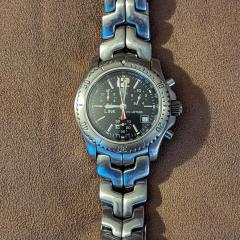Best Practice Sharpening Gravers on Diamond Grinding Wheel
-
Recently Browsing
- No registered users viewing this page.
-
Topics
-
Posts
-
I thought about some easily dissolvable thick oil or grease on the pallet fork that once assembled could be run through cleaning fluid to remove the temp grease used to hold the assembly together. Just a thought but haven't tried it yet.
-
Thank you for your introduction and welcome to this friendly forum. We all look forward to your contributions and continued involvement.
-
By RichardHarris123 · Posted
You can buy an assortment from cousins etc or ebay.
-








Recommended Posts
Join the conversation
You can post now and register later. If you have an account, sign in now to post with your account.
Note: Your post will require moderator approval before it will be visible.